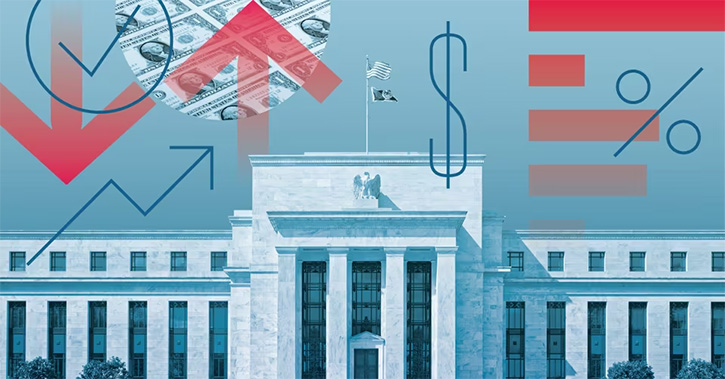
As we expected at the start of the Biden administration, the new president has shifted course significantly from his predecessor on policy affecting investors and investing.
For example, he has embraced policy to encourage investing strategies that examine environmental, social, and governance (ESG) information. The bureaucratic machinery of the Department of Labor (DOL) is spinning up a new fiduciary package. And, as we thought, Congress is working on a bill to enact some widely-anticipated adjustments to the retirement system, although we don’t necessarily expect this type of package to be prioritised in 2022.
However, the rest of the legislative agenda - particularly President Biden’s plans to raise taxes - has not played out the way we expected.
As the 2022 legislative session gets underway, we check in on a few areas where we expect the Biden administration to focus its attention in the coming year.
1) Tax Increases We Expected Have Not Materialised
In May 2021, Morningstar predicted around an 80% chance that Democrats would raise the corporate business tax rate to some extent, resulting in a small decrease to company valuations. We thought it would come in the form of an increase in the statutory rate, most likely an increase to 26% from the current 21%.
Now, though, it looks as though Democrats intend to mostly raise corporate business taxes by increasing taxes on profits recognised in other countries--if they can push any form of the Build Back Better bill through at all. There is also the possibility they will create a new corporate Alternative Minimum Tax at a rate of 15%; again, this would hit only those that have been most adept at avoiding taxes.
If Democrats can unify in the next few weeks to pass a bill and increase corporate taxes, the total amount of new revenue from these new tax provisions would still be around $800 billion over 10 years (slightly more than the increase in rates to 26% from 21%), but it would not affect all companies equally.
Rather, companies that were better-positioned to recognise revenue in foreign jurisdictions would see their taxes go up, while firms that recognise most of their revenue in the United States could see little change. We think this is a possible, but by no means certain, outcome.
On the other hand, the other big priority for Biden’s legislative agenda, the Infrastructure Investment and Jobs Act, passed Congress as we expected. This legislation will provide a significant boost to some sectors such as basic materials and transportation.
2) ESG Gets a Policy Boost
As expected, the Department of Labor has worked to roll back a Trump-era rule that would make it extremely difficult and risky for employers managing covered retirement plans (such as 401(k) plans) to consider ESG when selecting default investments for their workers. Many people use these default options for their retirement investments, so undoing the rule is key to mainstreaming ESG investing in retirement plans.
In this sense, the Biden administration’s proposed new rule is most important for what it would undo rather than what it would do.
What will this rule reversal mean for people saving for retirement? We think most people will not even notice the change initially. But if the rule is finalised, more and more participants' investment managers will gradually come to consider lurking ESG risks as part of the effort to maximize long-term risk-adjusted returns. Further, interested participants may be better able to pick funds with specific ESG goals.
None of this will happen overnight, but this new regulation will start to nudge employers to take ESG into consideration in making investment selections. Financial professionals who recommend rollovers from 401(k) and other defined-contribution plans into Individual Retirement Accounts (IRAs) may start to see more clients with ESG investments coming from employer-sponsored plans and more client interest in applying ESG analysis to their IRA investment strategies.
On the SEC side, we expect swift action on a new package of issuer disclosures, particularly around climate change. We think this is an important regulatory development that will meet the needs of investors, as we told the Securities and Exchange Commission (SEC) back in June.
Morningstar’s view is that, as the effects of climate change--and governments' responses to it--accelerate, climate and carbon risk is becoming increasingly material for a host of sectors and publicly traded companies.
Therefore, we think the SEC must move toward regulations that require issuers to disclose consistent, actionable information on their contribution to climate change and the risks that climate change poses to their businesses.
3) Fiduciary Package Means New Challenges for US Advisers
The Trump administration did something unexpected in its last months, and many financial professionals missed it at first: The DOL finalised a new fiduciary rule.
In some ways, the rule, which addresses fiduciary requirements for retirement advisers, does not look that different to the Obama-era rule that was ultimately tossed out by the courts. It’s already finalised, but its provisions will be gradually phased in H1 2022.
The rule is most noteworthy for financial professionals for whom a large share of new assets come from recommending rollovers out of defined contribution plans into IRAs, as many will need to ensure they document the reasons these rollovers are in their clients’ best interests among other requirements. As most workers participate in employer-sponsored retirement plans that offer institutionally priced products, they typically pay lower fees in retirement plans than in IRAs.
To justify the rollovers, we think financial professionals will often need to point to the value of the services they offer. This could help firms differentiate themselves from their competitors, if they choose to go beyond simply complying with the regulation and more robustly demonstrate how they can help investors achieve their financial goals in retirement.
Still, the Biden administration plans to refine the rule by both expanding the number of financial professionals who qualify as a fiduciary under the Employee Retirement Income Security Act, and by tightening the requirements for these fiduciaries to engage in otherwise prohibited transactions.
In practical terms, as DOL’s authority is account-type-specific but product-neutral, this could mean a new set of rules for insurance agents, who have generally avoided federal regulation.
4) A Retirement Bill Could Make Progress
The last five administrations have come in with unified control of Congress (although in 2001 it didn’t last long after Senator Jim Jeffords switched parties) and tried to press for major legislative accomplishments before the first midterm election.
These presidents - from Clinton to Obama - have had varying degrees of success, and Biden still hopes to pass some version of Build Back Better. However, as the 2022 election cycle nears, big partisan packages will be no longer be under consideration.
This shift will leave the administration more available to focus on retirement legislations, which have historically enjoyed wide levels of bipartisan support. (For example, SECURE, the Pension Protection Act, and even ERISA all passed with overwhelming support.)
Several legislative proposals that fall under that umbrella are currently being kicked around. They include a host of good ideas with broad support, although none are earth-shattering game-changers.
If a package were to move forward (which is possible but by no means guaranteed in this Congress), it would likely permit an interesting innovation that some companies have been trying out by seeking individual rulings from the IRS: An individual could receive an employer match for paying down a student loan just as they would for contributing to a 401(k) plan.
Such a package would also clean up some of the Internal Revenue Code and ERISA to grant retirement savers easier access to products such as qualified longevity annuity contracts and collective investment trusts.
Bigger provisions that cost more money, such as expanding the Saver’s Credit (or requiring automatic enrollment) may be harder to get through, but there is some chance.
5) Retirement Legislation May Take Longer to Pass
Although the 2021 calendar year is in the books, Democrats still haven’t passed the legislative centerpiece they hoped to push through this Congressional session. That means that Democratic leaders will spend the early part of 2022 trying to craft a plan that unifies the various factions of their party, and they may succeed.
On the executive side, the administration has been clear about what it intends to do, and we believe it will continue to execute on a new fiduciary package and further ESG regulations.
No one ever went broke betting against Congress taking action, but popular bipartisan retirement reforms will likely eventually pass, even if it takes longer than the end of 2022.




























